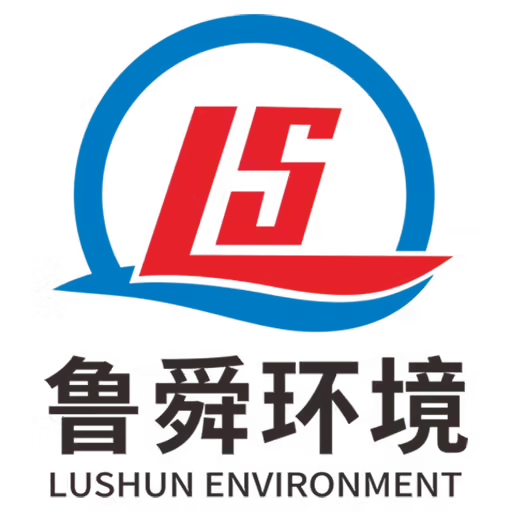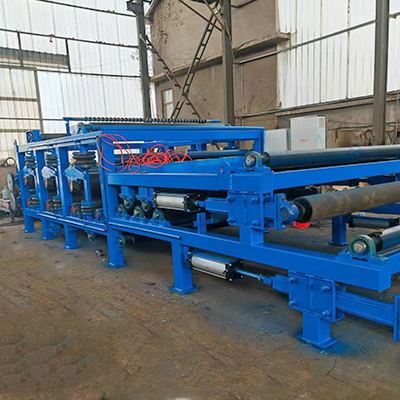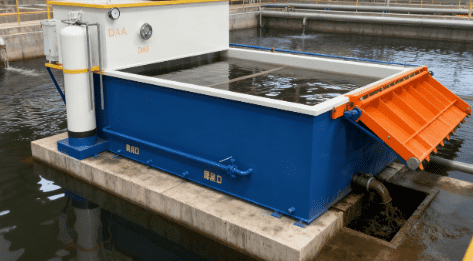“Pretreatment facelift” for sludge
At the end of the sewage treatment plant, the belt filter press is reshaping the sludge dewatering scene with “assembly line” operation. This equipment, which consists of a filter belt, a roller system and intelligent control, achieves a leap-forward reduction in sludge moisture content from 95% to 75% through a continuous process of flocculation-pressing-stripping, becoming the “efficiency champion” in the field of solid-liquid separation.
Complete the sludge “dewatering revolution” in four steps
“Pretreatment facelift” for sludge
- Precise mixing:
Sludge with a moisture content of 99% collides with a PAM flocculant with a concentration of 0.1-0.3% in a static mixer (mixing time ≤ 30 seconds) to form flocs with a diameter of 2-5 cm. Data from a municipal plant showed that after flocculation, the sludge specific resistance dropped from 5×10¹²m/kg to 1×10¹²m/kg, and the dehydration efficiency increased by 40%.
- Intelligent dosing:
By dynamically adjusting the dosage of chemicals through an online sludge concentration meter (accuracy ±5%), after a paper mill applied it, the cost of chemicals per ton of sludge was reduced from 8 yuan to 5 yuan.
Gravity and filter belt “initial collaboration”
- Even fabric:
The sludge is spread on the filter belt through a weir-type distributor (drop ≤ 10cm), with a thickness of 2-5cm. A dyeing and printing factory renovation case showed that after the uniformity of the cloth was improved, the pre-dehydration time was shortened from 8 minutes to 5 minutes.
- Gravity Draining:
The filter belt runs at a low speed of 0.5-3m/min. The polyester filter belt with a porosity of 40% quickly discharges free water, and the moisture content drops from 95% to 85%.
The “Art of Gradient Pressure” of Mechanical Force
- Roller system design:
10-15 groups of press rolls are arranged in descending diameter (φ600mm→φ150mm), forming an increasing pressure of 0.1-1.2MPa. In the treatment of oily sludge in a steel plant, the maximum press roll pressure reached 1.5MPa, and the oil removal rate exceeded 90%.
- Belt tension:
The upper and lower filter belts are pressed in a “sandwich” manner through a pneumatic tensioning device (tension 5-15kN). A case study of protein sludge from a food factory showed that the solid content of the mud cake increased from 15% to 25% after pressing.
- Shear dehydration:
The S-shaped roller conveyor generates lateral shear force on the filter belt, destroying the sludge floc structure and releasing bound water. Actual measured data shows that the shearing effect contributes to a 20% increase in dehydration rate.
Mud cake stripping and filter belt regeneration
- Scraper stripping:
The polyurethane scraper with a 30° inclination angle can accurately peel off the mud cake (water content below 75%). A municipal plant processes 300 tons of sludge per day, and the thickness of the mud cake is stable at 1.5-2cm.
- High pressure backwash:
15-20MPa water jet cleaning filter belt (water consumption ≤ 0.5m³/ ton mud), combined with ultrasonic pre-cleaning, can keep the filter belt water permeability above 90%, extending the service life to 8000 hours.
“Customized solutions” for multiple industries
Municipal sludge:
A sewage treatment plant in a provincial capital city uses 3-meter-wide equipment to process 800 tons of sludge per day, and the mud cake directly meets the requirements of cement kiln co-treatment (water content <75%).
Industrial wastewater:
- Paper Mills:
Treating fiber sludge, the sludge cake has a solid content of 28% and a calorific value of 4500kJ/kg, which can replace coal and reduce costs by 15%.
- Pharmaceutical Factory:
Treat fermentation residues and dehydrate antibiotic residues harmlessly through acid- and alkali-resistant filter belts (pH 2-12).
Emergency rescue:
In a river dredging project, a vehicle-mounted belt filter press processed 2,000 tons of mud within 48 hours, and the dehydrated mud cake was directly used for embankment filling.
Dual evolution of high efficiency and environmental protection
With the advancement of the “Three-Year Action Plan for Harmless Sludge Treatment”, belt filter presses are developing towards refinement and resource utilization:
- Ultra-high pressure models:
Develop rollers with a pressure of more than 3MPa, with the goal of reducing the moisture content of municipal sludge to 60% (in combination with chemical conditioning).
- Filter belt regeneration technology:
The bio-enzyme cleaning process replaces the traditional water jet, reducing cleaning wastewater by 90%. A pilot project saves 12,000 tons of water annually.
- Sewage sludge-to-energy:
The integrated thermal drying module can reduce the moisture content of the mud cake to below 10% and directly use it as biomass fuel. A thermal power plant case shows that one ton of mud can generate 80 degrees of electricity.
Environmental philosophy in the assembly line
This equipment, which is only 10 meters long, processes tens of millions of tons of sludge every year, but rarely appears in the spotlight. Its wisdom lies in using continuous mechanical movement to break down the complex dehydration process into a quantifiable standard process; its value lies in making the closed loop of treatment of every drop of sewage visible “the last mile”. As the equipment operator said: “When the mud cake is peeled off the filter belt, I see not only the results of dehydration, but also the commitment to green water and green mountains.”






